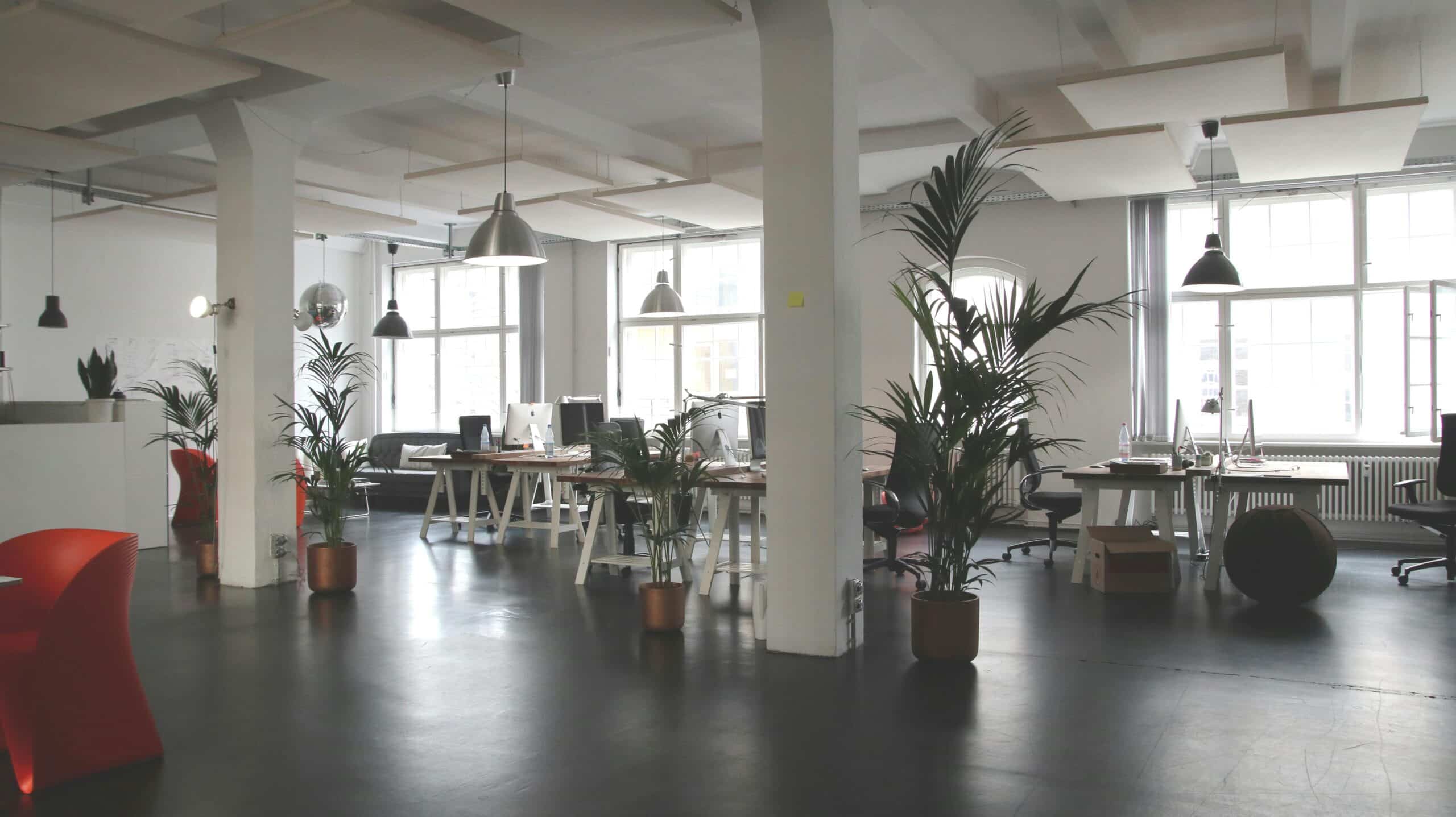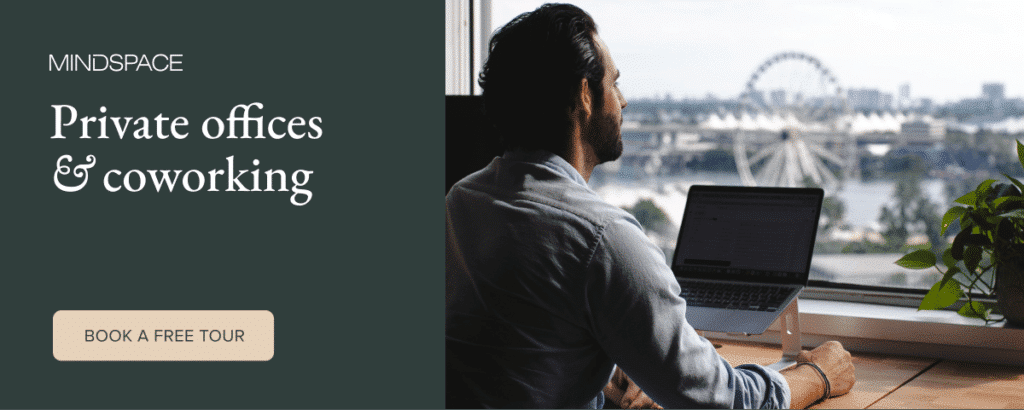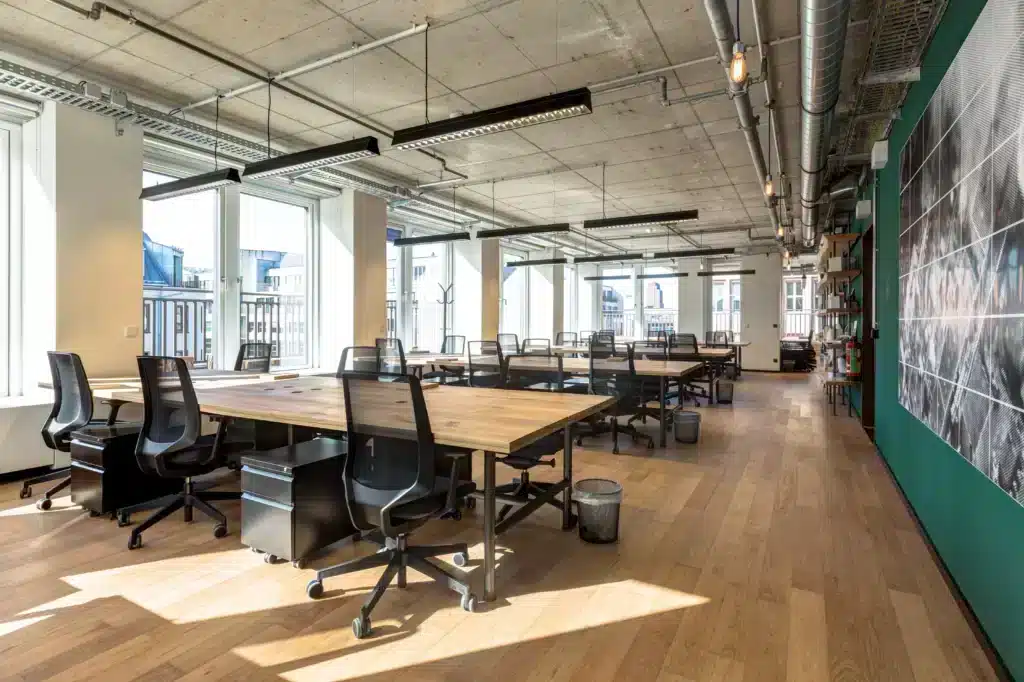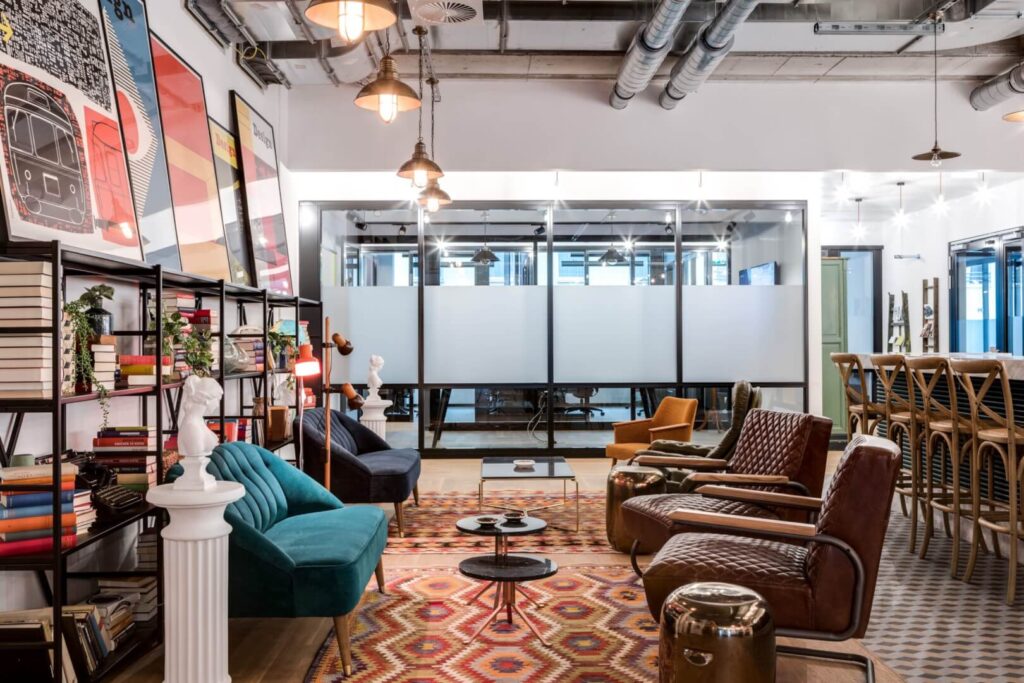
How to Rent an Office Space: A Step-by-Step Guide
If you’re wondering how to rent office space, you’re not alone. In 2024, more than 375,000 businesses had secured premises with commercial leasing providers, with thousands of new businesses looking for space every year.
Choosing and securing an office for the first time or to facilitate an expansion plan can be tricky. You’ll need to have a handle on what spaces are available to find an ideal location, with potential options including everything from traditional office spaces to hot-desk layouts for those looking to embrace a hybrid office environment.
If you’re looking to find office space quickly and efficiently, you’ll need to have thoroughly researched potential locations, decided which amenities are most important to you, and considered future expansion plans. You’ll also need to arrive with some knowledge of lease agreements to streamline the process.
To make your life easier, we’ve put together a useful guide on what to bear in mind when looking to rent the ideal location, alongside some common mistakes to avoid when renting office space for the first time.
The Importance of Choosing the Right Workspace
Understanding how to find affordable office space is all well and good, but a budget-friendly monthly rent isn’t everything. If you want to get the most from your new workspace, you’ll need to ensure it’s fit for the task. Below, we’ll explore what you need to bear in mind when scouring for an office space rental, including what to look for when touring office spaces, understanding different types of office leases, navigating lease agreement specifics, and more.
1. Determining Your Space Requirements
If you’re looking to rent office space, first consider how much space you’ll actually need. Striking out on your own. Chances are, you’re not going to need much square footage at this stage. A dedicated desk in an open-plan coworking space or serviced office should be more than sufficient.
If you’re looking for an office for rent for a larger team, you’ll need to take into account the number of employees and any extra facilities you might need. This can include meeting rooms, conference rooms, and breakout spaces. You’ll also want to consider growth. If you’re looking to expand your team in the coming months, you’ll need a workspace that can accommodate this. A flexible office layout with an adaptable floor plan is a good choice here.
2. Setting a Realistic Budget
When looking for office space for rent, cost is often the determining factor. An affordable monthly rent is all well and good, but you’ll also need to consider all those additional costs before finalizing the lease. This includes things like the security deposit, utilities, and any hidden charges and premiums.
3. Understanding Different Lease Types
When renting commercial real estate like offices, you’ll come across various types of lease terms, with gross leasing being the most common. Gross leases see tenants pay a flat amount every month, with this monthly payment covering basics like rent, taxes, and insurance. Negotiating lease terms is possible, with modified gross terms allowing tenants to offload some utility costs to the landlord. Net leases are another option, with landlords paying incidental costs.
Percentage leases involve tenants paying a fixed rate, with a percentage of profits being paid out to the landlord. Finally, there are variable leases. The conditions of a variable lease change over time, with these changes bound to market conditions. If you’re looking to rent downtown office space or set up shop in a central business district, this is something to bear in mind. While you’ll have some power when negotiating lease terms, you’re not always going to be in a position to turn things too far in your favor.
4. Factoring in Hidden Costs
Finding the right office is relatively straightforward, but you can find yourself shocked at the last minute with a heap of hidden charges. Some of the most sought-after office amenities such as parking often come with extra charges, while other hidden costs include on-site maintenance and common area charges. Make sure you’re factoring in all of these when evaluating office space against your budget.
5. Considering Future Growth
If you anticipate expansion, make sure you’re looking for an office location that will accommodate growth. Leasing a space with spare square footage will give you the breathing room you need as your business expands and team sizes swell, but it’s not your only option. Many coworking spaces offer a range of working setups, serving everyone from the freelancer to the up-and-coming business. As your headcount grows, simply hire more desks. If you need facilities more familiar to a conventional workspace, swap out flexible hotdesking for a private office and dedicated team suites.
6. Research and Identify Potential Locations
You might have a tight idea of where you want to base your operations. Alternatively, you might be more flexible when it comes to location. In either case, there are several avenues available to you when it comes to finding the right office. Many smaller office venues can be found online at listing services and marketplaces. If you’re looking for something larger or a specific type of leasing agreement, commercial real estate websites can connect you with the most desirable property in your target location.
7. Understanding Location Factors
Location is everything when it comes to finding a great office location. However, a lot goes into the equation when settling on the best location for your business needs. First and foremost, consider accessibility. A good office location should be well connected, with excellent road and public transport links. If you plan on doing business with international clients and partners, proximity to an airport or interrail stations is also ideal. Of course, you’ll also need to consider clients far closer to home. Even if your existing client base is relatively local, your location still needs to be accessible to them.
While your office itself might be well-equipped with all the facilities you need, local amenities are another thing to bear in mind. Whether it’s dining establishments to entertain clients or nearby businesses and vendors you’ll come to depend on, being situated somewhere central to such amenities is vital.
8. Exploring Different Office Types
Nowadays, there’s no such thing as a one-size-fits-all office. Before you settle on a specific location, make sure you’ve considered all potential office types. Traditional offices are always worth considering. These commercial properties typically come fully-equipped with all the facilities you’ll need, along with service and maintenance support provided.
Serviced officers are another option. While they’re generally a more expensive option, they do offer a greater degree of flexibility and are ideal for smaller businesses undergoing growth. If you’re happy to work remotely, a virtual office is something else to think about. Furnished offices are also something to think about if you’re looking to move in quickly and kickstart business immediately.
Then you have coworking spaces to consider. These workspaces usually take the form of an open-plan office, bringing together freelance professionals, hybrid workers, and smaller businesses into one place. With many benefits, some of the best flexible coworking spaces offer a range of workspace solutions, ranging from hoteling-style desks for hire to private office suites. They’re incredibly flexible, generally cost-effective, and can spark innovation thanks to networking and collaboration opportunities.
At Mindspace, you’ll find an extensive range of coworking spaces available in some of the most desirable locations around. From open-plan offices in the heart of town to more niche workspaces catering to specific industries, Mindspace’s coworking locations are the way to go if you’re looking for a flexible, first-rate alternative to a standard office.
9. Scheduling Viewings and Preparing Questions
A potential office might look great on paper, but nothing beats seeing the place in person. Once you’ve created a shortlist of potential offices and scheduled viewings, start working on a list of pre-prepared questions to ask realtors as you’re shown around. You’ll want to target questions about overall rental costs, any hidden charges, lease agreement specifics, and more.
10. Evaluating the Physical Space
Now it’s time to actually see your shortlisted office locations in person. You’ll want to make the space your own, so have a think about layout and workspace configurations to see if a space is right for you. Natural light is also important, with brighter spaces more likely to encourage productivity and promote wellbeing. What’s more, consider the current condition of the space itself. If it falls short of your expectations, you might find yourself with some negotiating power when it comes to nailing down a lease.
11. Assessing Building Amenities
Sufficient space for workstations is only the tip of the iceberg when it comes to securing a suitable office space. You’ll also need to ensure the building itself is equipped with all the amenities you need. Is the building accessibility-friendly with elevators and automatic doors? Are there enough common areas for your workforce to relax comfortably when enjoying downtime or hosting breakout meetings? There are also things like security to consider. A secure office space should include CCTV and intruder alarms as standard.
12. Negotiate Lease Terms
Negotiating lease terms for the first time can be daunting, but it’s an essential step that needs to be completed before moving into your office. While it varies between landlords, there’s generally always scope for negotiation. First, make sure you’re fully aware of the type of lease you’re entering into, then establish who’s responsible for which specifics.
13. Reviewing Lease Agreements Carefully
Just because the lease negotiation seems to have gone well, don’t assume a deal is done and dusted. After carefully reviewing things for clarity, you’re ready to sign the lease agreement. A legally binding agreement, a lease will itemize everything from service charges and maintenance costs to the rental amount itself. Make sure you understand everything laid out in the lease agreement before committing your signature to it.
Depending on the responsibilities outlined in the agreement, you’ll now need to set up essential utilities and office services. This includes everything from heat and air to internet connection. Once you’ve finalized your lease, make sure you’re communicating details with clients and employees to avoid any transitional problems.
How Mindspace Provides Tailored Solutions for Businesses of All Sizes
At Mindspace, we understand that not everyone has the same scope when it comes to finding the ideal office space. That’s why we offer a range of tailored workplace solutions that cater to all kinds of clients. From dedicated desks and all-access membership to premier coworking spaces, to private offices and suites for growing teams, you’ll always find the perfect office location for your needs with Mindspace.
Interested in learning more about Mindspace’s innovative coworking spaces and office locations? Explore our solutions online today or get in touch to book a tour.









